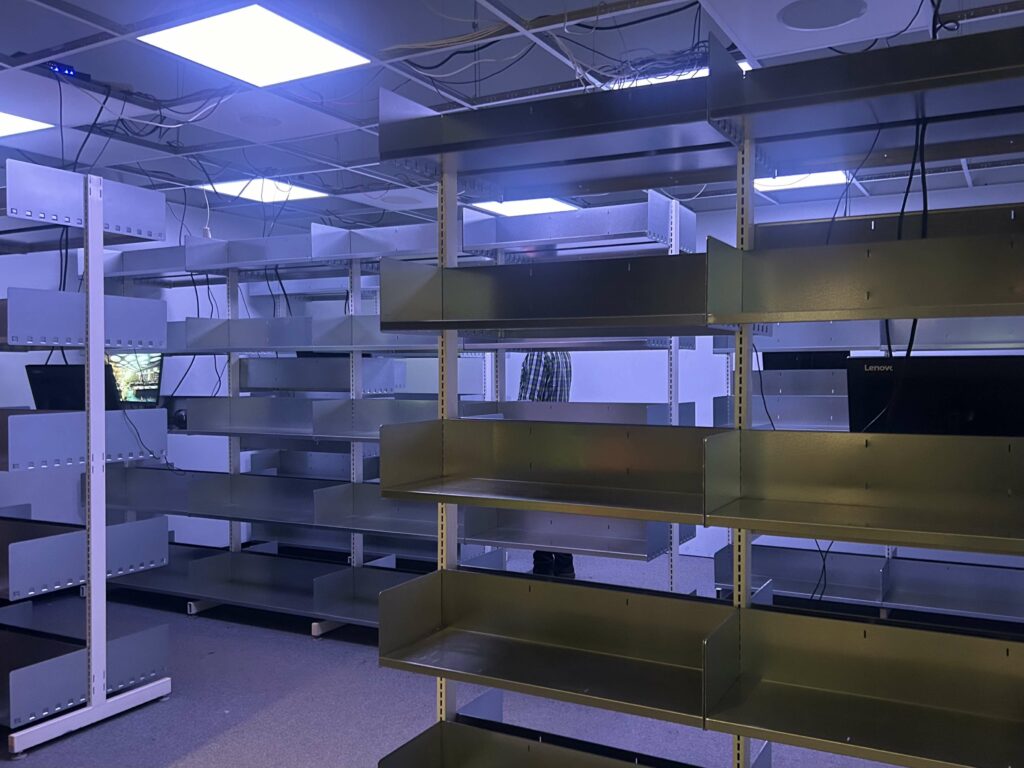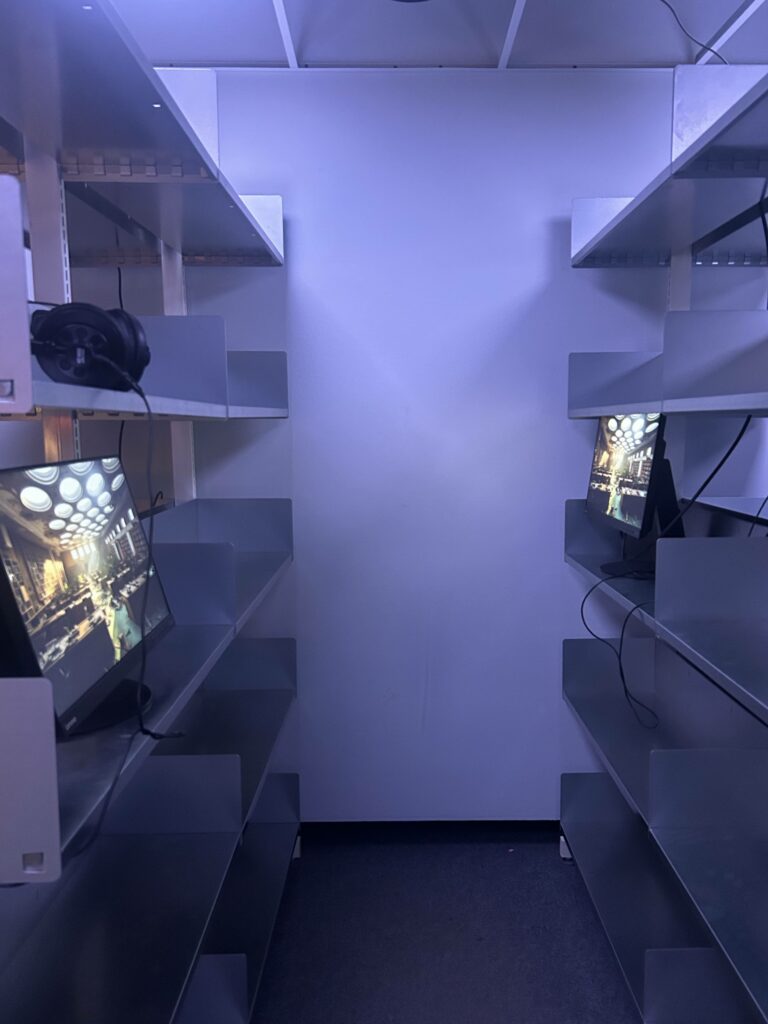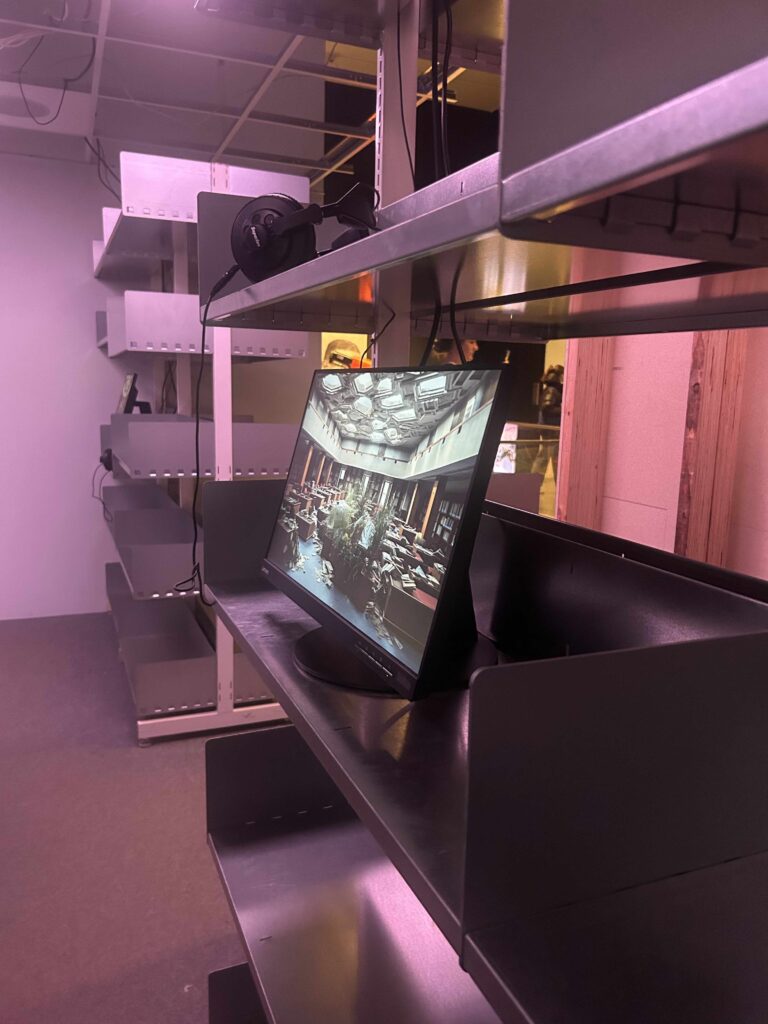A few weeks ago, I visited an exhibition at the Louisiana Museum of Modern Art in Denmark called “The Irreplaceable Human—Conditions of Creativity in the Age of AI.” The scale and substance of the exhibition was impressive: it presented a number of installations provoking reflections on how we can continue to curate and cultivate human creativity as we increasingly integrate AI into our work and lives. The exhibition’s artists and commentators argue that creativity—the ability to create new and valuable things—is an inherent part of human nature and our narratives. Our capacity for creativity has enabled us to evolve, survive, develop, and thrive as a species.
One project that was of particular interest to me was Yuri Pattison’s Open Stacks (2023). The installation included ranges of library shelves, empty but for a few computers. In this seemingly abandoned library, the computers’ monitors and headphones presented a video and narrative created with AI. The images included vacated and decaying readings rooms; the narrative was about how AI absorbed, replaced, and superseded libraries. The human institution of the library, which created a diverse and dynamic information environment, has been reduced to a recursive, homogenous, and commercialized information marketplace. The narrative asks if this is the final chapter for human creativity—or if we still have agency as authors and librarians.
A generation ago, we had to articulate and discern the relationship between the library and the internet. The best strategies we implemented focused on augmenting library resources, services, and spaces rather than annihilating them. Now we are having similar conversations about AI, which holds great promise for further transforming libraries and the ways they curate and cultivate human creativity. The history of the library is a history of sustaining the hope that there is always something new and valuable happening. Those coming new creations, and the practices of human evaluation that attend to and enable access to them, is work that should not be—and likely cannot be—fully automated.


